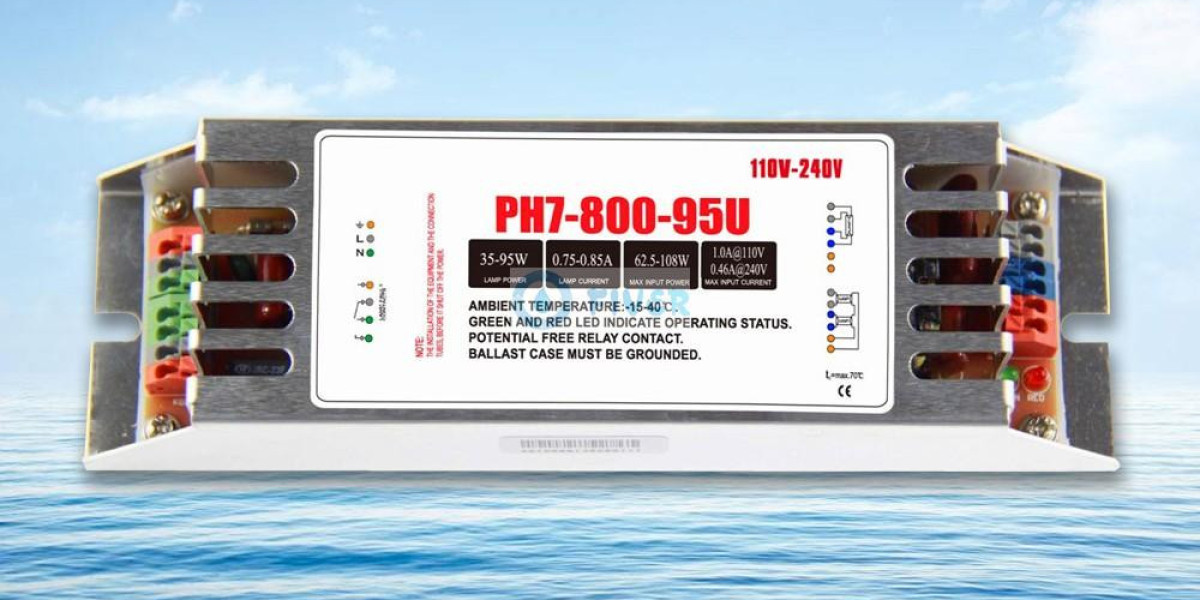Ultraviolet (UV) disinfection systems have revolutionized the way we purify air, water, and surfaces—offering a chemical-free and highly effective solution. However, behind every efficient UV lamp lies an essential component: the UV power source. Often called a UV ballast or power supply, the UV power source regulates and delivers the correct electrical energy needed for the lamp to function optimally.
In this comprehensive guide, we’ll explore what a UV power source is, why it's important, the different types available, how to choose the right one, and maintenance tips. Whether you're a homeowner, facility manager, or OEM supplier, understanding the UV power source is key to ensuring efficient UV treatment and long-lasting system performance.
What Is a UV Power Source?
A UV power source is an electronic or magnetic device that provides controlled electrical current to a UV lamp, enabling it to produce UV-C light. UV-C (wavelength of 200–280 nm) is the germicidal range used to inactivate bacteria, viruses, mold, and other harmful microorganisms.
Unlike conventional lighting, UV lamps have very specific power requirements. The UV power source ensures the lamp receives the correct voltage and current during startup and continuous operation, ensuring maximum UV output and lamp lifespan.
Why Is a UV Power Source Important?
The UV power source is more than just a power switch. It plays several vital roles in the UV system:
✅ Ignition Control: It provides the necessary startup voltage to ignite the UV lamp.
✅ Power Regulation: It maintains consistent electrical current, preventing lamp flickering and performance drops.
✅ Lamp Protection: It protects the lamp from power surges and overheating.
✅ Efficiency Optimization: A quality UV power source ensures maximum UV-C output, improving disinfection performance.
✅ System Integration: Some power sources include smart features like lamp monitoring, fault detection, and remote control.
Without a proper UV power source, the system can suffer from erratic performance, premature lamp failure, or even complete shutdown.
Types of UV Power Sources
UV power sources vary based on the type of UV lamp used and the system's design. The most common types include:
? Magnetic Ballasts
Traditional power sources used with low-pressure mercury lamps.
Cost-effective but bulky and less energy efficient.
No smart control features.
? Electronic Ballasts (UV Electronic Power Supplies)
Lightweight and energy-efficient.
Provide high-frequency power, which enhances lamp performance and longevity.
Common in modern residential and industrial systems.
? Instant Start Power Supplies
Start lamps without preheating the electrodes.
Suitable for applications with infrequent switching.
? Preheat Start Power Supplies
Preheat electrodes before igniting the lamp.
Extend lamp life and reduce cathode wear.
? Dimmable UV Power Supplies
Allow control over UV lamp intensity.
Useful in variable treatment processes or energy-saving applications.
Applications of UV Power Sources
A UV power source is required in virtually every UV-based system. Some of the major applications include:
? UV Water Treatment Systems
Residential, municipal, and industrial water systems use UV lamps powered by ballasts to disinfect water without chemicals.
? UV Air Purifiers
HVAC-integrated systems or standalone air purifiers rely on UV lamps powered by compact ballasts for indoor air quality.
? Surface Disinfection Units
Hospitals and laboratories use UV disinfection carts and chambers, all powered by efficient UV power supplies.
? Industrial Curing Systems
UV curing in printing and manufacturing processes requires high-output UV lamps powered by robust electronic ballasts.
? Aquaculture and Aquariums
UV clarifiers in fish tanks and ponds depend on power sources for continuous germicidal action.
How to Choose the Right UV Power Source
Selecting the correct UV power source is crucial for system performance and lamp longevity. Consider the following factors:
✅ Lamp Compatibility
Ensure the power source matches the UV lamp type (low-pressure, medium-pressure, amalgam, LED) and its electrical requirements (voltage, current, wattage).
✅ Output Frequency
Higher frequency power supplies (20–60 kHz) are more efficient and offer better lamp performance than standard 50/60 Hz units.
✅ Voltage Range
Choose a power supply that supports input voltage fluctuations, especially in industrial or remote installations.
✅ Certifications and Safety
Look for certifications such as CE, UL, RoHS, or CSA to ensure compliance with electrical and safety standards.
✅ Smart Features
Advanced power supplies offer lamp life monitoring, temperature sensors, and alarm systems for proactive maintenance.
✅ Environmental Suitability
Ensure the power source is suitable for wet, dusty, or high-temperature environments if used outdoors or in harsh conditions.
Top Manufacturers of UV Power Sources
Several companies lead the market in producing high-quality UV power supplies:
Philips Advance
LightSources Inc.
Osram Sylvania
Atlantic Ultraviolet
Heraeus Noblelight
Wellmax
Mean Well (for UV LED drivers)
Always refer to your UV system manufacturer for compatible ballast recommendations.
Maintenance Tips for UV Power Sources
Proper care of the UV power source ensures the reliability of your disinfection system. Here’s how to keep it in top shape:
? Visual Inspection
Regularly check for signs of overheating, burnt smell, or damaged wiring.
⚡ Voltage Monitoring
Use a multimeter to verify that the output voltage is within the lamp's operating range.
? Replace When Faulty
If your lamp is functioning poorly or not turning on, the power source may be failing—even if visually intact.
? Avoid Overloading
Never exceed the rated capacity of your UV power supply. Overloading can damage both the lamp and the ballast.
? Scheduled Servicing
Include the power source in your regular UV system maintenance schedule.
Signs Your UV Power Source Needs Replacement
? Flickering or non-functioning UV lamp
? Burning smell or excessive heat
? Irregular UV output or alarms from the control panel
? Physical damage or corrosion on terminals
? End of recommended service life (usually 3–5 years)
Benefits of Using a Quality UV Power Source
✅ Reliable Operation
Consistent and stable UV lamp function.
✅ Extended Lamp Life
Reduced wear on electrodes and components.
✅ Enhanced Disinfection Performance
Steady power ensures strong and uninterrupted UV-C output.
✅ Energy Efficiency
Modern electronic ballasts consume less energy than outdated magnetic models.
✅ Safety and Compliance
Protection against surges, overheating, and electrical faults.
Conclusion
The UV power source is the beating heart of any ultraviolet disinfection system. Whether you're disinfecting drinking water, purifying air, or curing materials, your system’s effectiveness relies on the performance of this small yet vital component.
From selecting the right type to maintaining it properly, investing in a quality UV power source ensures safety, efficiency, and peace of mind. As UV technology becomes more widely adopted, understanding components like the UV power source is essential for making informed purchasing and maintenance decisions.








